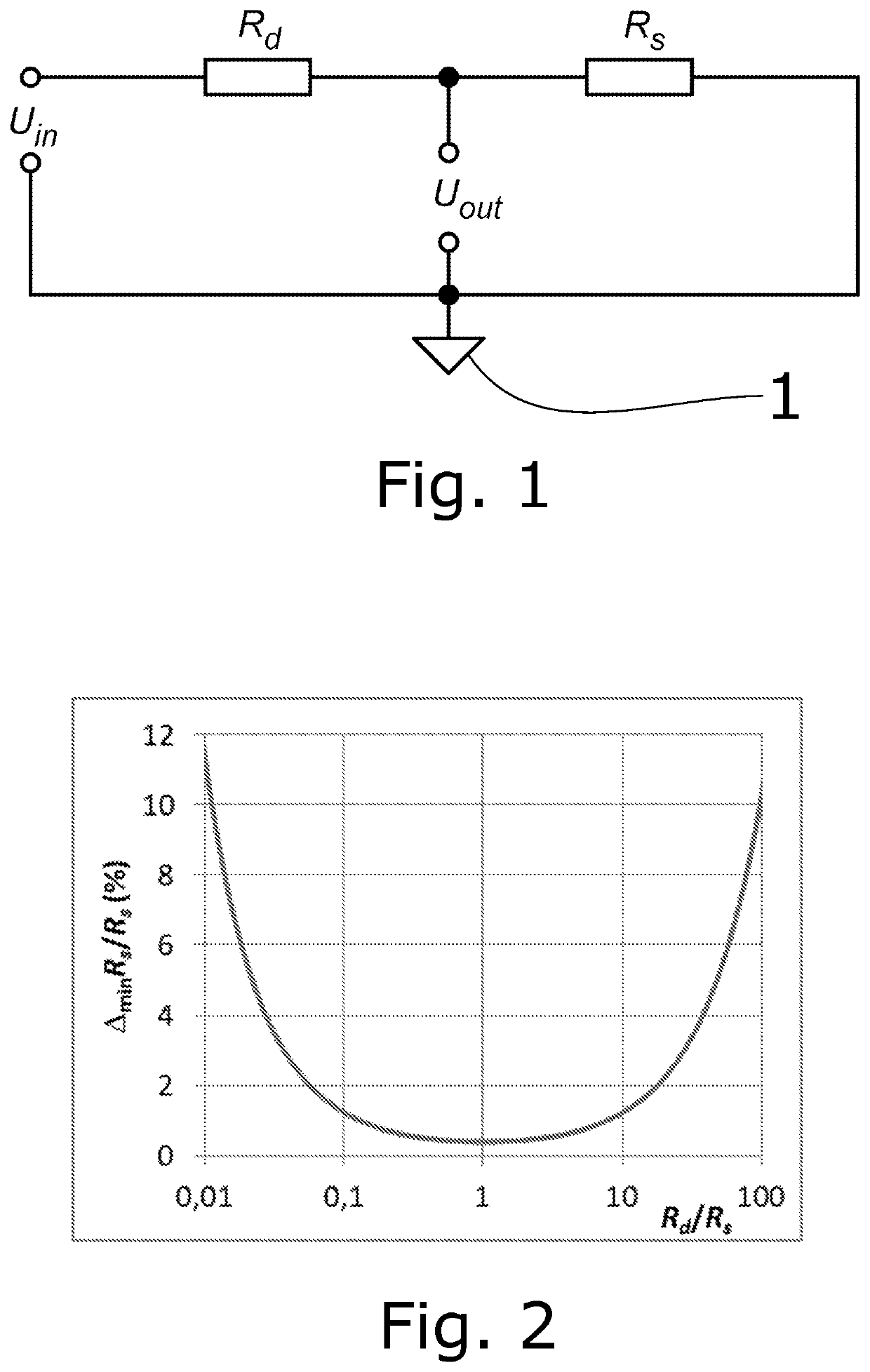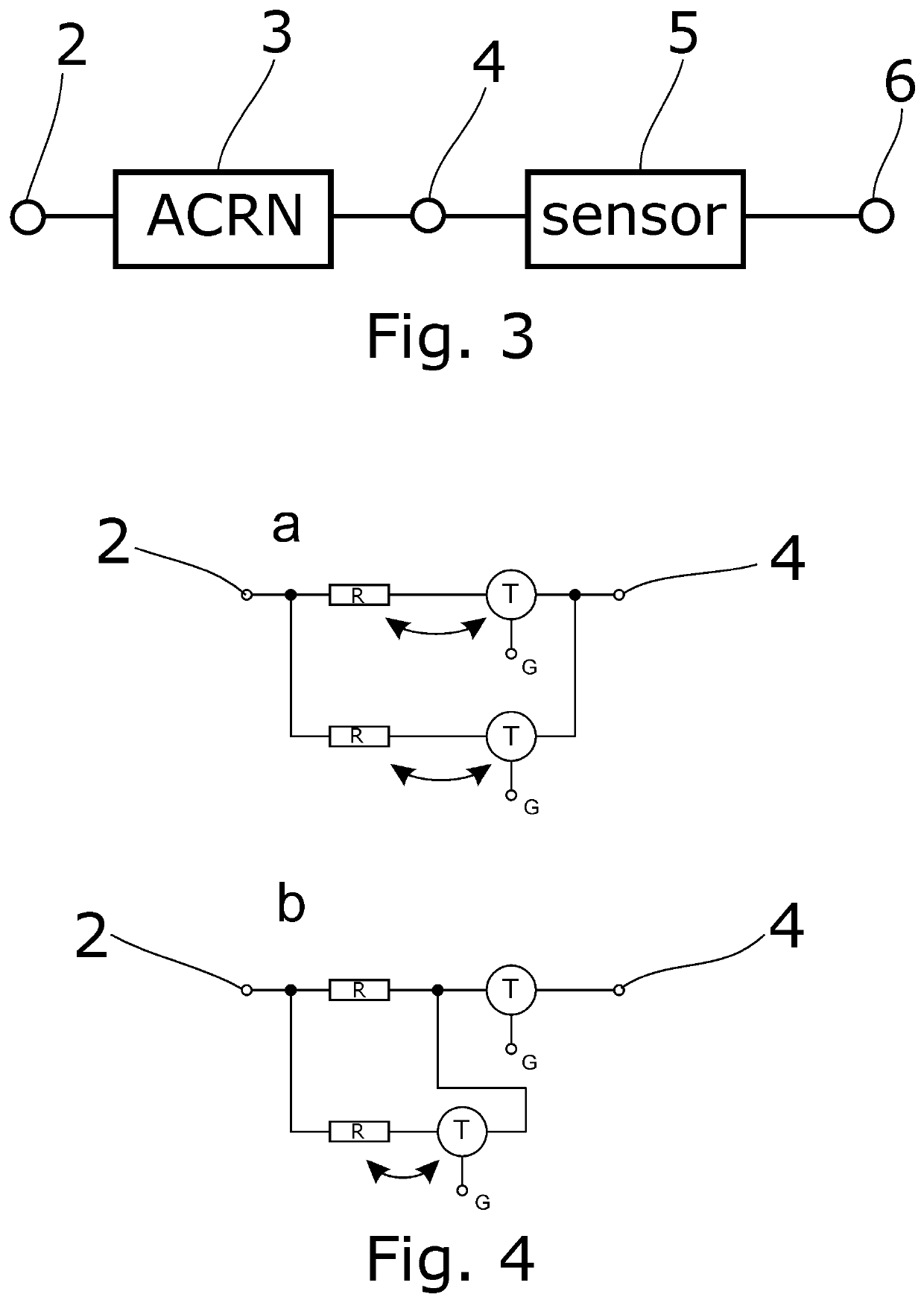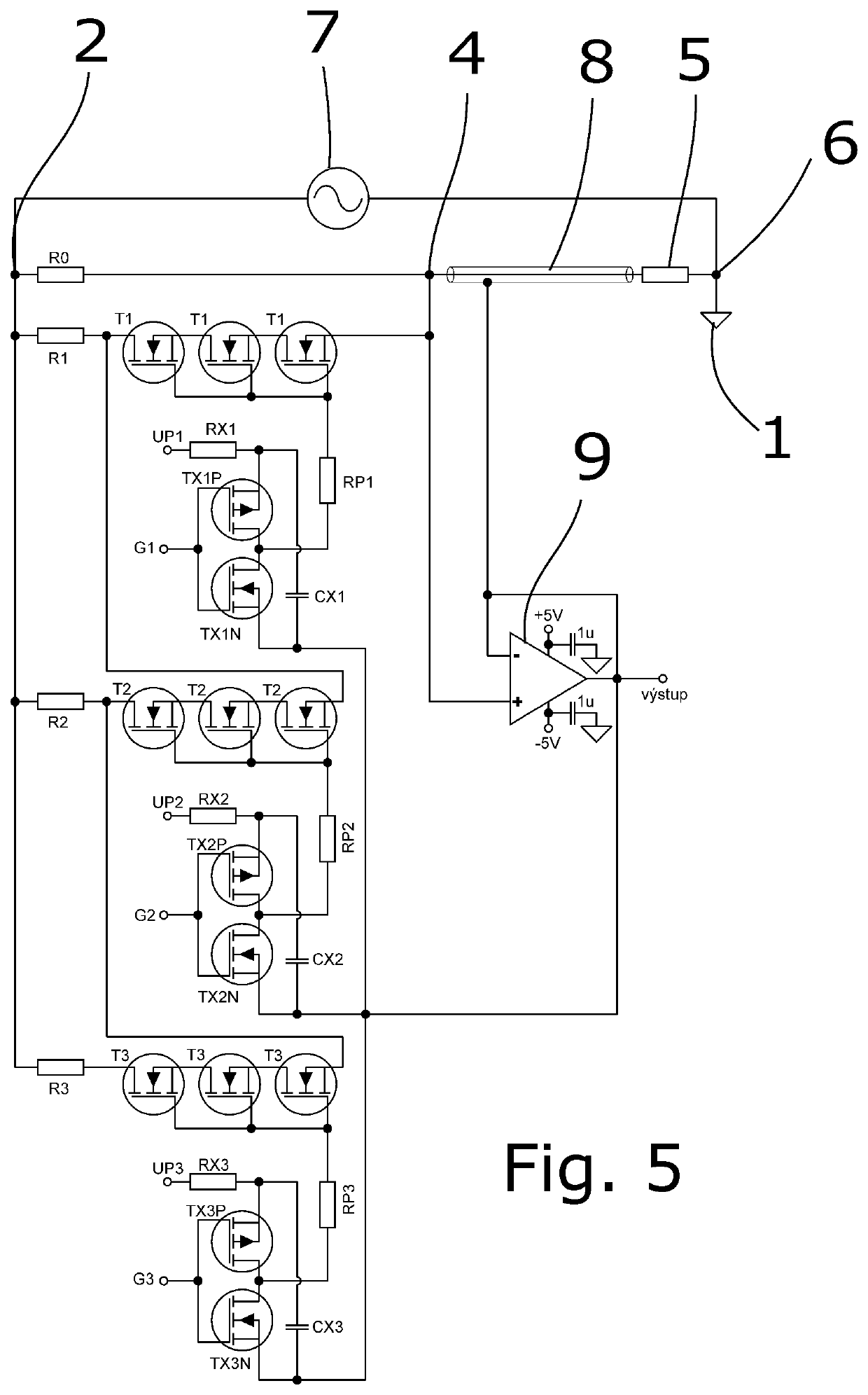Method and device for measuring resistance of resistive sensor
a technology of resistive sensor and measuring device, which is applied in the direction of altering the measuring range circuit, static storage, voltage divider, etc., can solve the problems of inability to measure accurately, the resolution of measurement is getting substantially worse, and the use of means can be inappropriate, so as to achieve the effect of high sensitivity of the measuring device, and no risk of damage to the sensor
- Summary
- Abstract
- Description
- Claims
- Application Information
AI Technical Summary
Benefits of technology
Problems solved by technology
Method used
Image
Examples
Embodiment Construction
[0031]The basis of the invention is a voltage divider formed by the connection of the actively controlled resistor network 3 (referred to as ACRN) with two terminals between the nodes A 2 and B 4, and a sensor 5 between the nodes marked as B 4 and C 6, see FIG. 3. ACRN 3 includes an arrangement of two or more branches 10 that contain an element with defined resistance (resistor) and a switching element, which is a unipolar transistor. Preferably, the switching element is formed by series connection of multiple switching transistors T1. Two ways of mutual arrangement of two branches 10 in ACRN 3 are apparent from FIG. 4. If a variable arrangement of the resistor and the transistor is possible, it is marked in the diagram by a two-way arrow. Other branches 10 can be added to ACRN 3 in an analogous manner. Connection of a given branch resistor into the divider is carried out by switching on the switching transistors, which are between the branch resistor and the node A 2, or B 4. The i...
PUM
 Login to View More
Login to View More Abstract
Description
Claims
Application Information
 Login to View More
Login to View More - R&D
- Intellectual Property
- Life Sciences
- Materials
- Tech Scout
- Unparalleled Data Quality
- Higher Quality Content
- 60% Fewer Hallucinations
Browse by: Latest US Patents, China's latest patents, Technical Efficacy Thesaurus, Application Domain, Technology Topic, Popular Technical Reports.
© 2025 PatSnap. All rights reserved.Legal|Privacy policy|Modern Slavery Act Transparency Statement|Sitemap|About US| Contact US: help@patsnap.com



